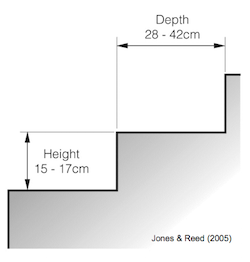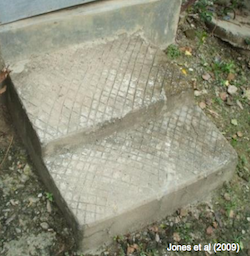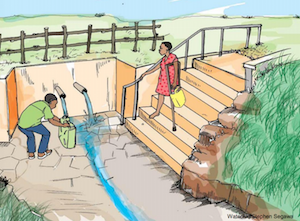Accessible - Steps
From Akvopedia
| Suitable for: steep terrain; where space is limited; households or communities with no wheelchair users. |
| Construction |
Advantages |
Disadvantages |
Improvements / variations |
Cost / labour |
| Recommended step dimensions (for reference) Steps should be low and even – all the same height and depth |
|
Steps exclude some users, e.g. those using mobility devices. | Paint steps white or bright colour to increase visibility. | |
| Low concrete steps with cross-hatching to reduce the risk of slipping | Cross-hatching is easy to apply – the concrete is scored while wet | No edge protection for unstable or visually impaired users |
|
Low |
| Handrail accompanying steps to a protected spring |
|
Handrail needs maintenance to ensure it is stable and strong enough | Paint handrail and steps white or bright colour to increase visibility | Medium |
Acknowledgements
- Content and images: Compendium of accessible WASH technologies WaterAid and WEDC.




